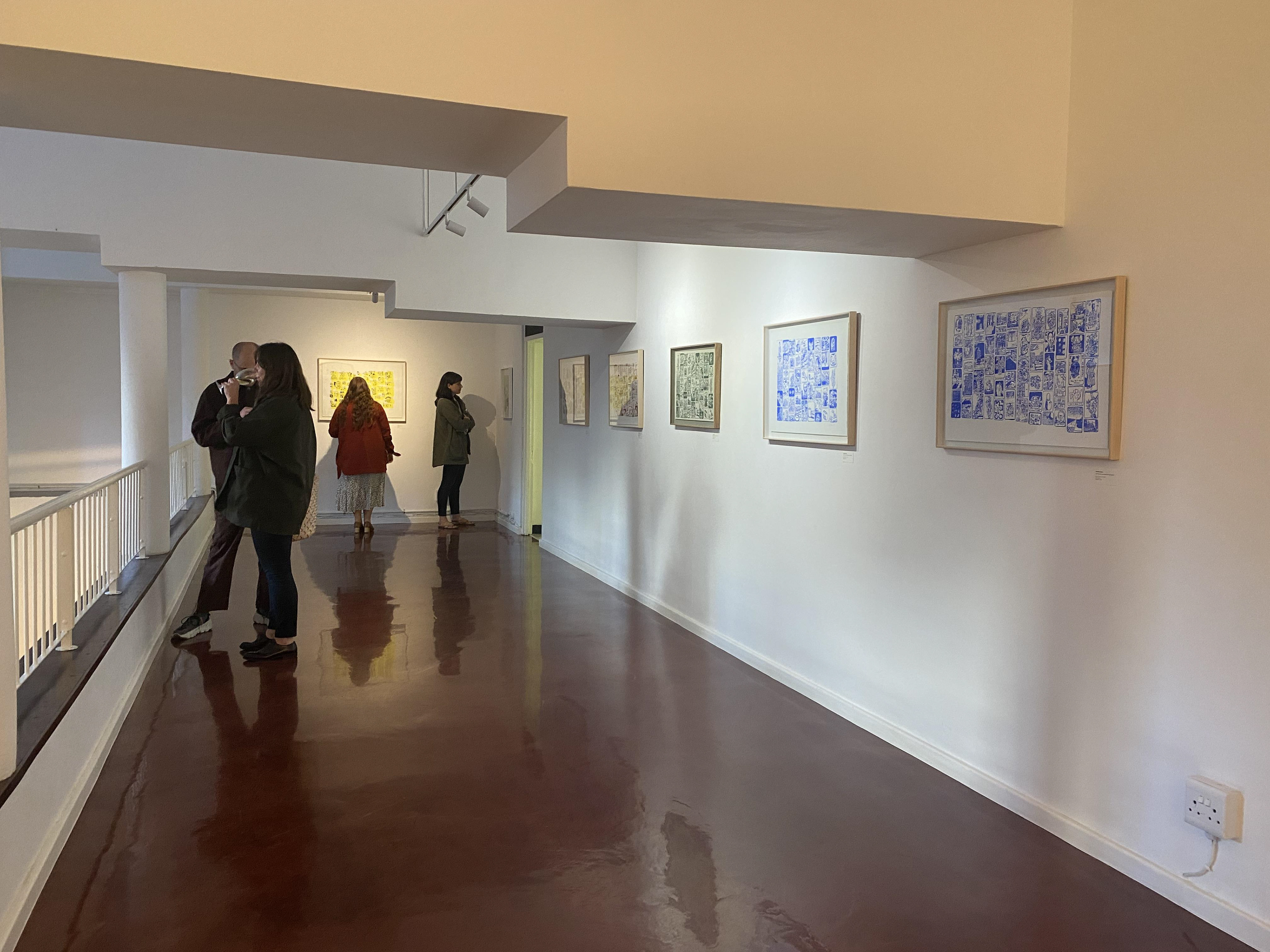SCROLL
INCLUDING: DECEM - September 2021 / Acts of Translation - January 2022
Scroll comprises of overlapping bodies of work done for my MFA exhibition at the London Metropolitan University and for a solo show at the Association for Visual Arts in South Africa.
Components of this body of work were shown (along with 100 ceramic vessels) under the name 'idiolects' as my MFA presentation, and at the Association of Visual Art as 'acts of translation' … but really it should always have been called SCROLL.
Scroll has associations that are both ancient and contemporary with both meanings being widely used and well understood. I like the way the word travels from history to take on a contemporary meaning, and from the ‘endless scroll’ I get to appropriate imagery and return it to an analogue form.
'Acts of translations' was so called because I had started a project with the Wittebome School for the Deaf in Cape Town where I had kids translate haikus from ancient China and Japan into contemporary South African Sign Language. The children interpreted and translated the texts brilliantly, but COVID shut down the project and the momentum was lost. It had already been accepted as a body of work by AVA and the title was already publicised.
"Idiolect" more precisely encapsulates the essence of the exhibition; the term denotes "the speech habits peculiar to a person." I appreciate the concept that, even when sharing a common language, each person possesses a unique way of speaking with its own rules and idiosyncrasies. This notion extends to the similarity between art and speech (or writing), where unintentional distinct styles, akin to handwriting, emerge. Simultaneously, it underscores the subtle gap that persists, however minute, in attempts at communication. There will always be just enough difference to raise doubts about whether a concept has truly jumped that communicative divide.
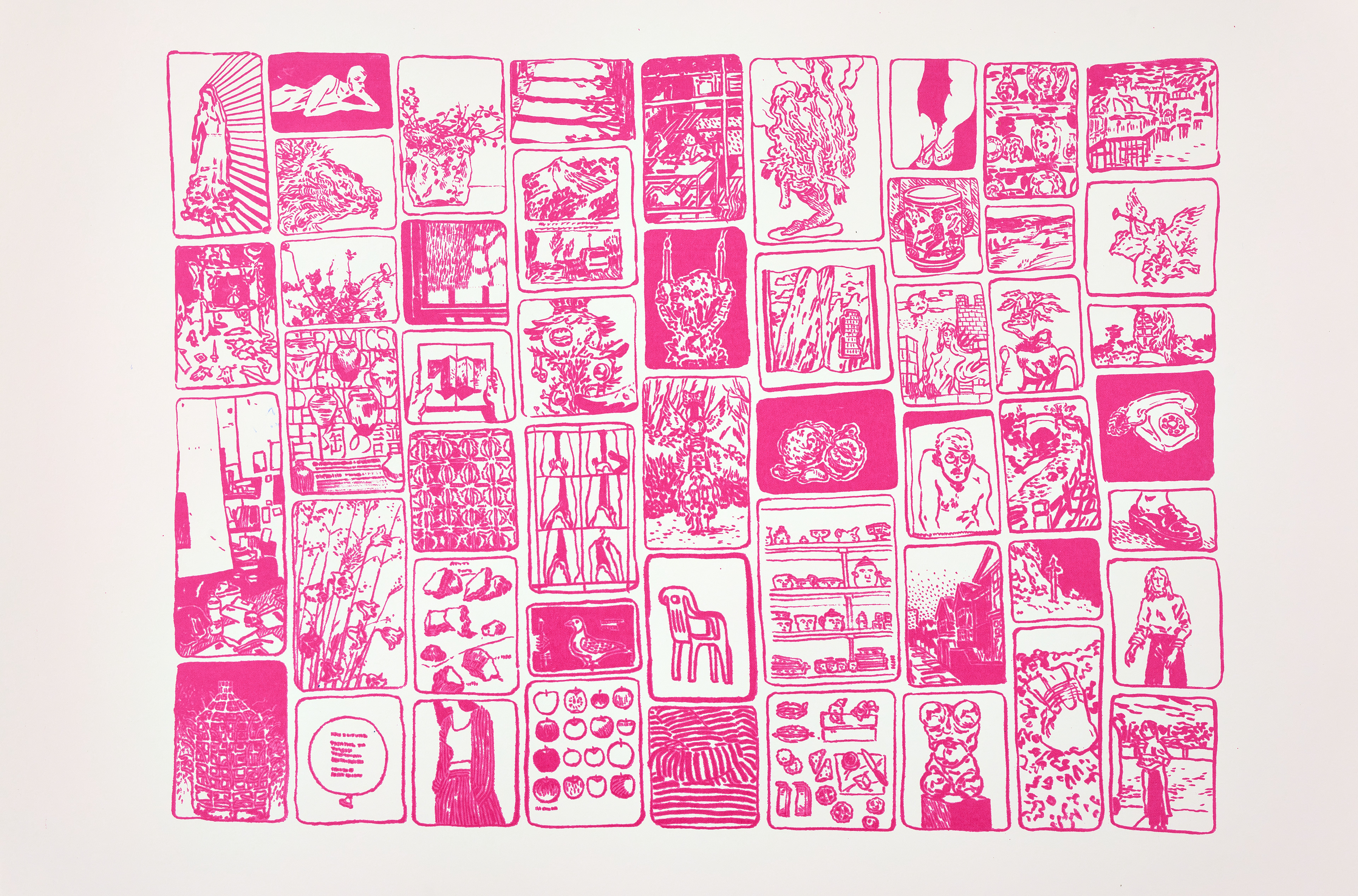
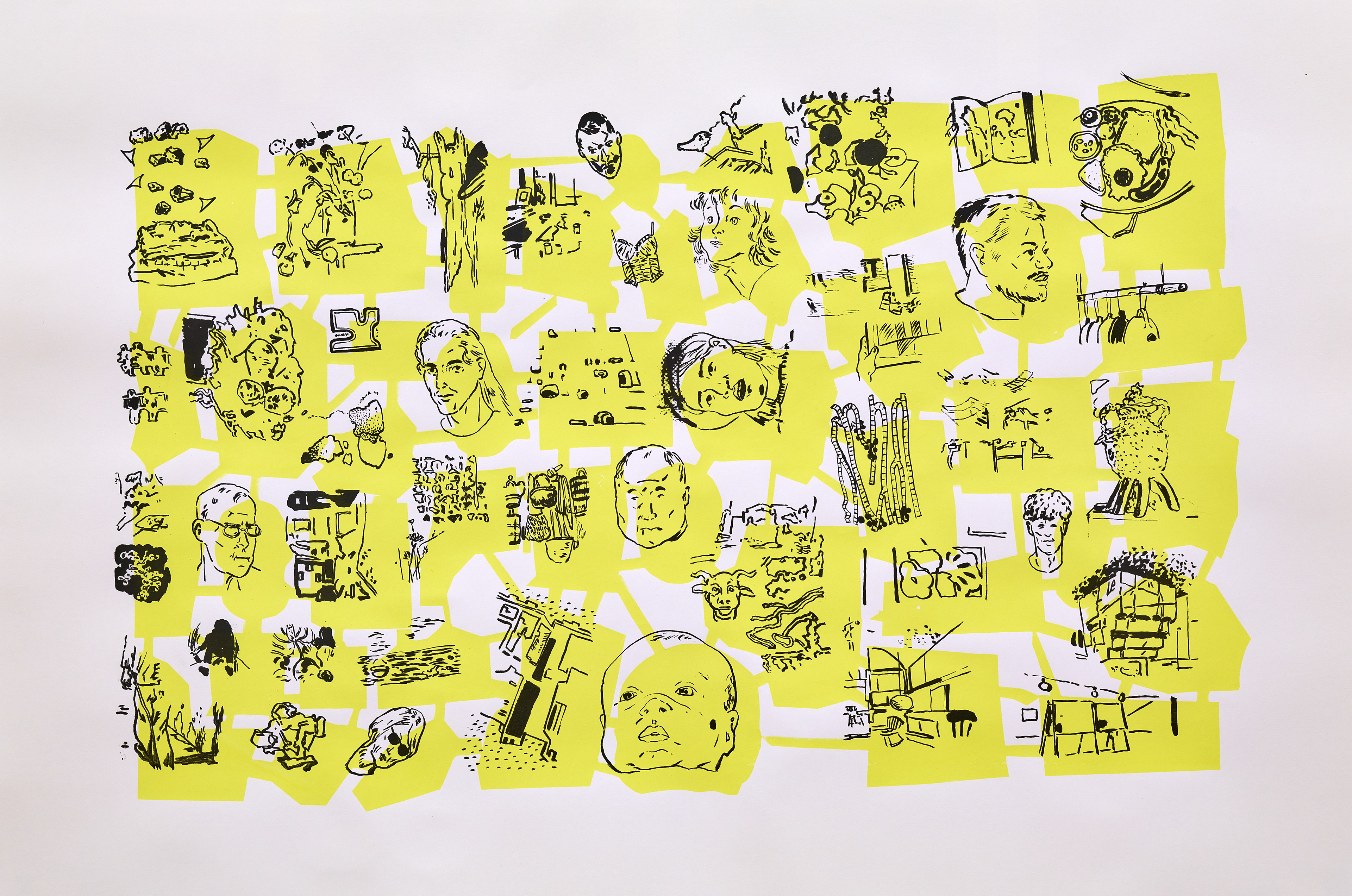

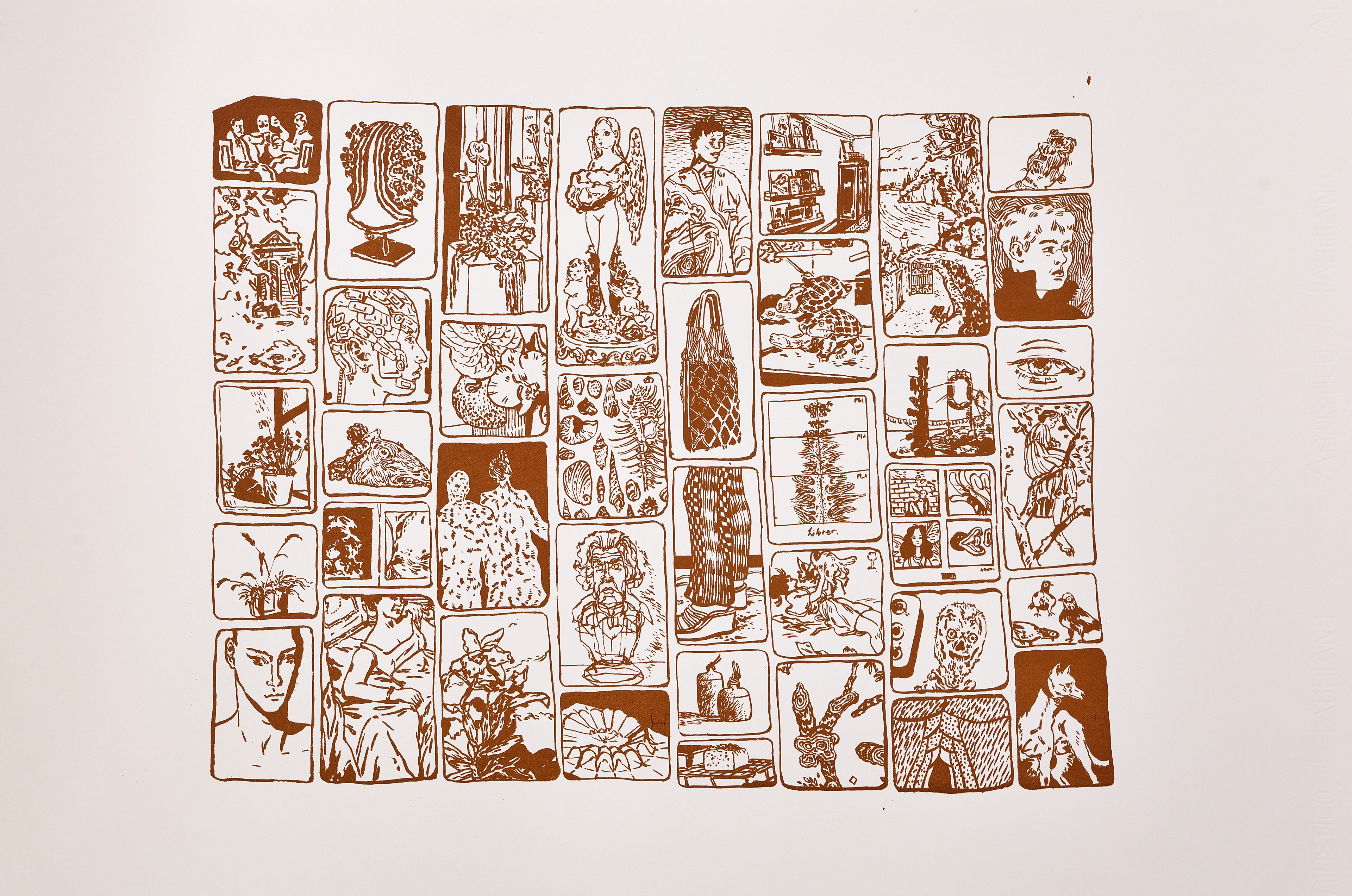
The pieces showcased as 'idiolects' and 'acts of translation' take Marshall McLuhan’s famous maxim, "the medium is the message," quite literally. They delve into what is lost, altered, and bestowed when content is laundered through various art-making processes. At each juncture in the trajectory of this content, its nature is impacted—similar to the way memories are remade and re-edited upon recall.
The featured mediums in IDIOLECT encompass screen printing, allowing identical reproduction with a flat regularity difficult to achieve by hand; pencil, bringing the intimacy of a scribbled reminder and the classroom's scent; digital drawing, offering undo, clone, mask, duplicate, and scale functions on a handbag-sized interface; and pottery, providing the hum of the wheel and the recurring fiery disasters of the kiln. As the title suggests, the show considers the human conduit (both artist and viewer) as a 'medium' through which information flows. Describing a work later becomes another iteration in the information's lifespan, with dynamics like greater economy and portability but less permanence compared to the object.
In Scroll and Self Portraits 1-6, I've utilised images from Pinterest (originals at https://www.pinterest.co.uk/isabellakuijers/pins/) to represent a sample of chosen images, forming part of the identity-building experience online. This content signifies pre-existing systems of information used idiosyncratically, akin to alphabets and languages. These images anticipate what we can express within this medium.
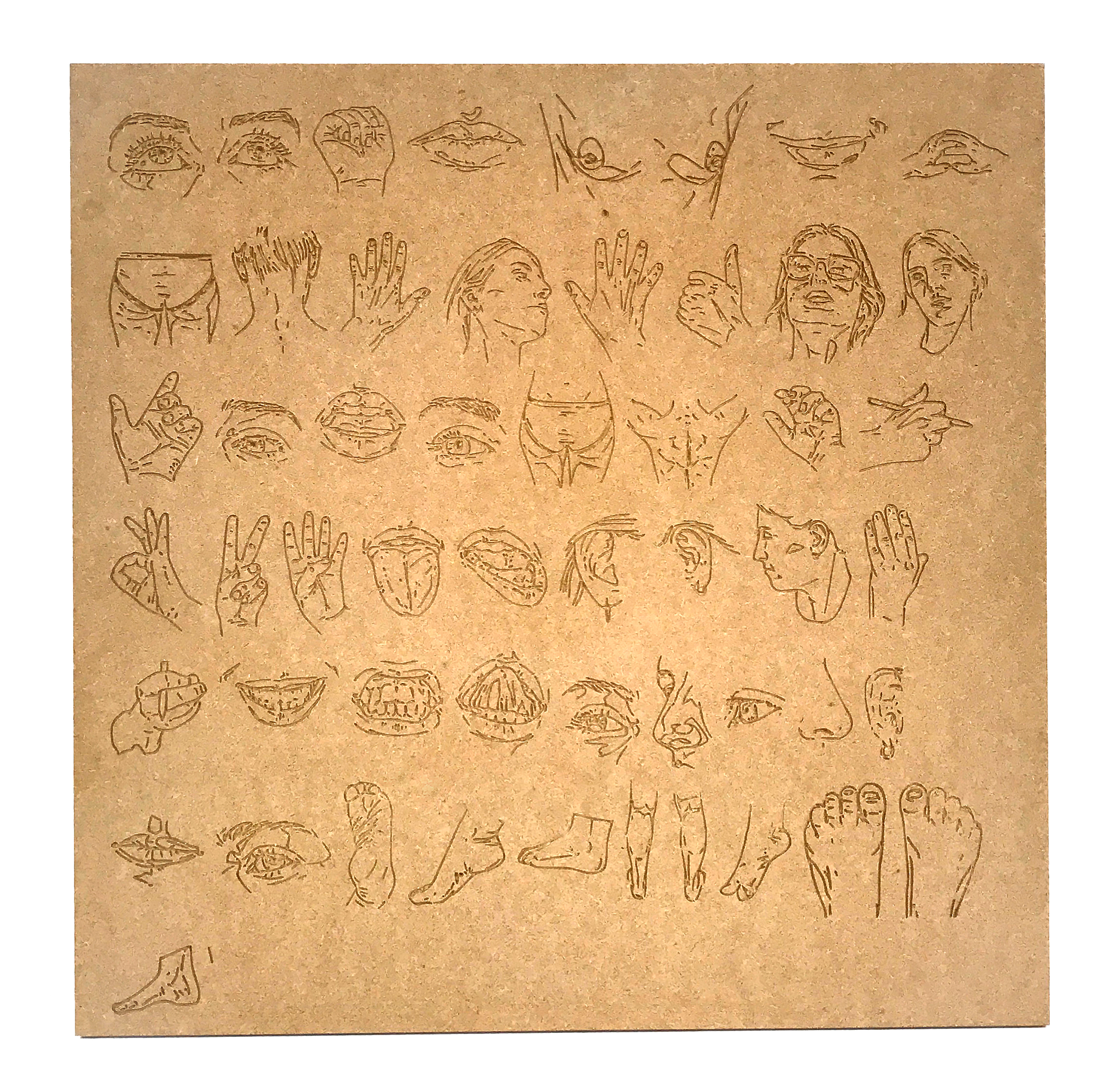
body language, engraved MDF

faces, engraved MDF
Body Language, Heads, and Object are cryptographic fonts engraved into MDF, emphasizing that the writing's content is influenced by its format. Each font represents a different mode of communication—from interpreting body language to using academic discourse or understanding the symbolic weight of objects. In Anthology, various fonts made throughout the year encode poetry, revealing how different registers and tones underscore our intended messages or what we seek to conceal in speech (or writing).
The act of eating together at a table fosters connection and sharing, and the vessels in my installations attempt to smuggle additional messages into that space. Writing these messages with the wheel spinning encodes the text, leaving illegible, abstract markings. Here, the wheel's peculiar axis of movement becomes the medium through which content is distorted, indicating the desire to communicate without revealing the content itself.
SCROLL asserts that the exchange rate between mediums, technologies, languages, and people is not 1:1. In the act of attempting to communicate, we encode parts of ourselves and our tools into the message.
Installation image of my MFA exhibition. I made another 90 tiny ceramic cups and handed them out to viewers on the opening night. On them I had 'encoded' thoughts and insecurities I was having about the upcoming show.
China marker and watercolour images ready to hang at the AVA.
Installation shots from the opening evening at the AVA.

